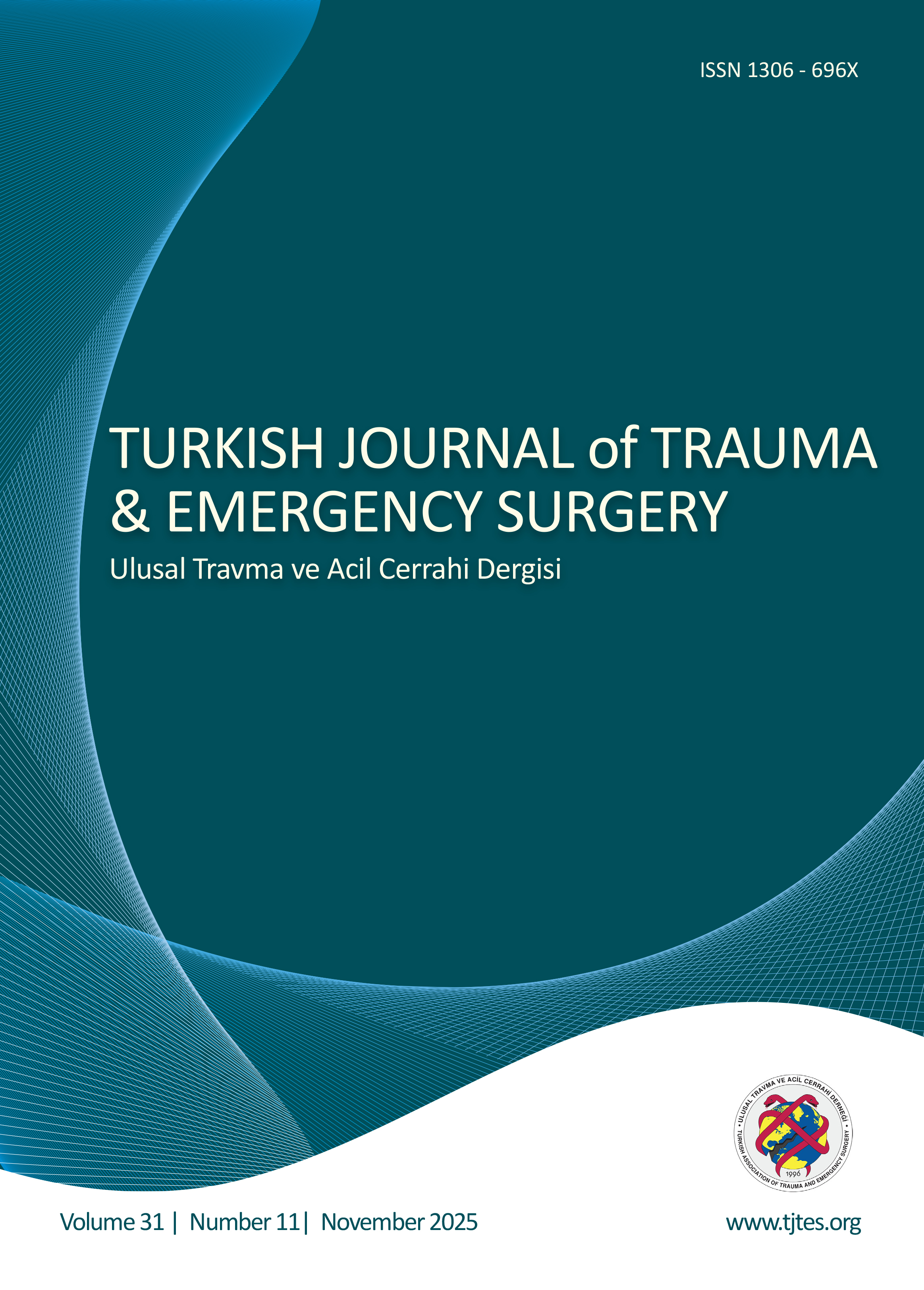Quick Search
Prognostic role of systemic inflammatory indices in predicting the severity of acute calculous cholecystitis
Meliha Fındık, Ramazan Kıyak, Bahadır Çağlar, Suha SerinDepartmant of Emergency Medicine, Faculty of Medicine, Balıkesir Üniversity, Balıkesir, TurkeyBACKGROUND: Acute calculous cholecystitis (ACC) is one of the most common conditions encountered in emergency medicine and surgical practice. Delayed recognition of severe cases can lead to complications such as empyema, gangrene, or perforation, resulting in high morbidity and mortality. While the Tokyo Guidelines provide standardized diagnostic and severity grading criteria, the availability and reliability of imaging may be limited in certain settings. Therefore, there is growing interest in simple and cost-effective biomarkers.
OBJECTIVES: This study aimed to evaluate the diagnostic and prognostic value of complete blood count (CBC)-derived systemic inflammatory indices, including neutrophil-to-lymphocyte ratio (NLR), platelet-to-lymphocyte ratio (PLR), neutrophil-to-lymphocyte × platelet ratio (NLPR), systemic immune-inflammation index (SII), and multiple inflammatory index (MII), in predicting disease severity in patients with ACC.
METHODS: A total of 160 patients diagnosed with ACC in the emergency department between January 2020 and May 2024 were retrospectively analyzed. Patients with acalculous cholecystitis, cholangitis, choledocholithiasis, incomplete data, or younger than 18 years were excluded. Demographic, clinical, and laboratory findings were reviewed. Receiver operating characteristic (ROC) curve analysis was used to determine optimal cut-off values.
RESULTS: The strongest predictive performance was observed for MII (cut-off = 250,011; sensitivity 76.9%; specificity 78.9%; AUC = 0.770). NLR (cut-off = 8.45) showed 76.9% sensitivity and 68.0% specificity (AUC = 0.755). NLPR (cut-off = 0.027) had 76.9% sensitivity and 54.4% specificity, while SII (cut-off = 2414) achieved 69.2% sensitivity and 72.1% specificity (all p <0.05). All indices were significant predictors of severe ACC.
CONCLUSION: CBC-derived systemic inflammatory indices, particularly MII and NLR, are effective, accessible, and inexpensive markers for predicting the severity of ACC. These parameters may complement clinical assessment and assist in decision-making, especially in situations where imaging is unavailable or inconclusive.
Akut taşlı kolesistitin ciddiyetini tahmin etmede sistemik inflamatuvar indekslerin prognostik rolü
Meliha Fındık, Ramazan Kıyak, Bahadır Çağlar, Suha SerinBalıkesir Üniversitesi Tıp Fakültesi, Acil Tıp Ana Bilim Dalı, BalıkesirAMAÇ: Akut kolesistit, acil tıp ve cerrahi kliniklerinde en sık karşılaşılan ve tedavi edilen acil durumlardan biridir. Akut taşlı kolesistit (ATK) olgularında inflamasyonun şiddetini ve kapsamını öngörmede kullanılabilecek sistemik inflamatuvar parametreleri değerlendiren çalışmalar sınırlıdır. Bu çalışmanın amacı, nötrofil/lenfosit oranı (NLR), trombosit/lenfosit oranı (PLR), nötrofil/lenfosit × trombosit oranı (NLPR), sistemik immün-inflamasyon indeksi (SII) ve çoklu inflamasyon indeksi (MII) gibi tam kan sayımı (TKS) kaynaklı parametrelerin ATKnın ayırıcı tanısı ve şiddetinin belirlenmesindeki tanısal değerini araştırmaktır.
GEREÇ VE YÖNTEM: Çalışmaya 1 Ocak 202031 Mayıs 2024 tarihleri arasında acil servise başvuran ve genel cerrahi tarafından ATK tanısı doğrulanan 160 hasta dahil edildi. Akut akalkülöz kolesistit, kolanjit, koledokolitiazis tanısı alan, eksik verisi bulunan ve 18 yaş altı hastalar çalışma dışı bırakıldı. Hastaların demografik, klinik, laboratuvar ve görüntüleme bulguları incelendi; NLR, PLR, NLPR, SII ve MII hesaplandı. Parametrelerin şiddet öngörüsündeki etkinliği ROC analizi ile değerlendirildi.
BULGULAR: En yüksek prediktif değer MIIde saptandı (kesme değeri=250.011; duyarlılık %76,9; özgüllük %78,9; AUC=0.770). NLR için 8.45 kesme değeri %76,9 duyarlılık ve %68,0 özgüllük gösterdi. NLPR (cut-off=0.027) %76,9 duyarlılık ve %54,4 özgüllük; SII (cut-off=2414) ise %69,2 duyarlılık ve %72,1 özgüllük sağladı (tümü p<0.05).
SONUÇ: Sistemik inflamasyon indeksleri, özellikle MII ve NLR, ATK şiddetinin değerlendirilmesinde etkili, ucuz ve erişilebilir biyobelirteçlerdir. Bu parametreler, özellikle görüntüleme yöntemlerinin sınırlı olduğu durumlarda klinik karar sürecine önemli katkı sağlayabilir.
Manuscript Language: English




